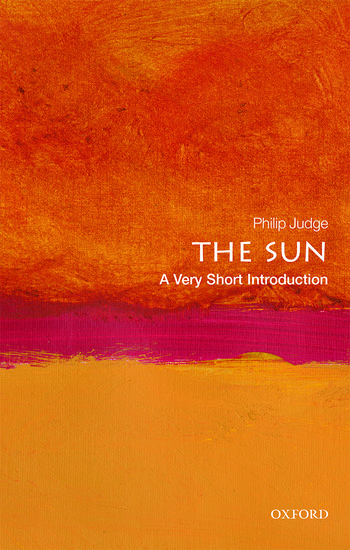Home >
A Very Short Introduction >
The Sun (Science)
A Very Short Introduction | Science
The Sun
ISBN: 9780198832690
Series: A Very Short Introduction
The Sun (Science)
A Very Short Introduction The Sun (Science) Media > Books > Non-Fiction > Education Books Expect Delays of Up to 4 Weeks| Order Below |
ISBN
9780198832690 (10-digit ISBN: 0198832699)
- Description
- Key Features
- Series Description
- Table of Contents
- Explains how the Sun works including its physics, and structure, origins, and future evolution
- Considers the importance of the Sun for life on Earth, and its impact on our climate
- Shows how studying the Sun has led to remarkable discoveries in astronomy and basic physics
- Discusses what we still have yet to discover about our nearest star
The Sun, as our nearest star, is of enormous importance for life on Earth - providing the warm radiation and light which allowed complex life to evolve. The Sun plays a key role in influencing our climate, whilst solar storms and high-energy events can threaten our communication infrastructure and satellites.
This Very Short Introduction explores what we know about the Sun, its physics, its structure, origins, and future evolution. Philip Judge explains some of the remaining puzzles about the Sun that still confound us, using elementary physics, and mathematical concepts. Why does the Sun form spots? Why does it flare? As he shows, these and other nagging difficulties relate to the Sun's continually variable magnetism, which converts an otherwise dull star into a machine for flooding interplanetary space with variable radiation, high-energy particles and magnetic ejections. Throughout, Judge highlights the many reasons that the Sun is important, and why scientists engage in solar research.
Oxford's Very Short Introductions series offers concise and original introductions to a wide range of subjects--from Islam to Sociology, Politics to Classics, Literary Theory to History, and Archaeology to the Bible.
Not simply a textbook of definitions, each volume in this series provides trenchant and provocative--yet always balanced and complete--discussions of the central issues in a given discipline or field. Every Very Short Introduction gives a readable evolution of the subject in question, demonstrating how the subject has developed and how it has influenced society. Eventually, the series will encompass every major academic discipline, offering all students an accessible and abundant reference library.
Whatever the area of study that one deems important or appealing, whatever the topic that fascinates the general reader, the Very Short Introductions series has a handy and affordable guide that will likely prove indispensable.
Please note: As this series is not ELT material, these titles are not subject to discount.
1: The Sun, our star
2: The Sun's life-cycle
3: Spots and magnetic fields
4: The dynamic corona
5: Solar impacts on Earth
Further Reading
Index
The Sun, as our nearest star, is of enormous importance for life on Earth - providing the warm radiation and light which allowed complex life to evolve. The Sun plays a key role in influencing our climate, whilst solar storms and high-energy events can threaten our communication infrastructure and satellites.
This Very Short Introduction explores what we know about the Sun, its physics, its structure, origins, and future evolution. Philip Judge explains some of the remaining puzzles about the Sun that still confound us, using elementary physics, and mathematical concepts. Why does the Sun form spots? Why does it flare? As he shows, these and other nagging difficulties relate to the Sun's continually variable magnetism, which converts an otherwise dull star into a machine for flooding interplanetary space with variable radiation, high-energy particles and magnetic ejections. Throughout, Judge highlights the many reasons that the Sun is important, and why scientists engage in solar research.
Key Features
- Explains how the Sun works including its physics, and structure, origins, and future evolution
- Considers the importance of the Sun for life on Earth, and its impact on our climate
- Shows how studying the Sun has led to remarkable discoveries in astronomy and basic physics
- Discusses what we still have yet to discover about our nearest star
Series Description
Oxford's Very Short Introductions series offers concise and original introductions to a wide range of subjects--from Islam to Sociology, Politics to Classics, Literary Theory to History, and Archaeology to the Bible.
Not simply a textbook of definitions, each volume in this series provides trenchant and provocative--yet always balanced and complete--discussions of the central issues in a given discipline or field. Every Very Short Introduction gives a readable evolution of the subject in question, demonstrating how the subject has developed and how it has influenced society. Eventually, the series will encompass every major academic discipline, offering all students an accessible and abundant reference library.
Whatever the area of study that one deems important or appealing, whatever the topic that fascinates the general reader, the Very Short Introductions series has a handy and affordable guide that will likely prove indispensable.
Please note: As this series is not ELT material, these titles are not subject to discount.
EASY ORDER FORM
PRICES LISTED INCLUDE CONSUMPTION TAX
Price Before Tax:
¥1,790


